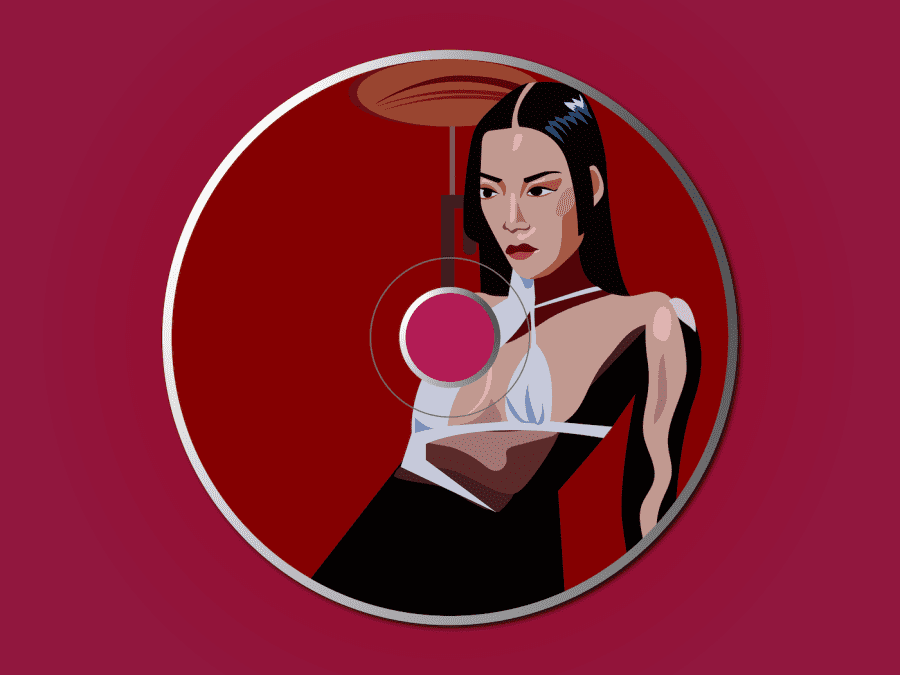Review: ‘Hold The Girl’ conveys vulnerability through an exhilarating electropop soundscape
Singer-songwriter Rina Sawayama’s sophomore studio album explores new emotional territory through upbeat dance tracks and compelling power ballads.
“Hold The Girl” is the latest album by Japanese British singer-songwriter Rina Sawayama. (Illustration by Susan Behrends Valenzuela)
September 26, 2022
Japanese British singer-songwriter Rina Sawayama wastes no time before jumping into the depths of her emotional burdens — themes of love, acceptance, anger, growth and more — in delivering a raw introduction to her sophomore album, “Hold The Girl.” Her 2020 debut album, “SAWAYAMA” — which was acclaimed by Sir Elton John as his “favorite album of the year” — introduced the world to her eclectic artistic persona, paving the way for “Hold The Girl” to be the triumphant release it is.
The first track, “Minor Feelings,” introduces just that and serves almost as a prologue to the following 12 songs. “How am I supposed to feel / When you’re telling me that nothing in my life is real / When you throw your words and hide behind a plastic shield / I just sit and smile,” Sawayama sings in the opening verse of the album’s first track. It’s a major way to kick off her most vulnerable work to date.
The titular track, “Hold The Girl,” seamlessly blends emotional intensity and vulnerability with an upbeat dance track, accompanied by rapid orchestral strings, thundering drums and intermittent vocal chops. “Hold The Girl” demonstrates Sawayama’s artistic genius and knack for breaking the boundaries between pop, soft rock and R&B.
She skillfully executes a similar juxtaposition in the song “Holy (Til You Let Me Go),” the sixth track on the album. The sound of church bells at the end of the previous song, “Forgiveness” — symbolic of Sawayama’s time at a religious girls school — fades into an airy synthetic melody, transforming a traditional-sounding bell into an electropop dance anthem. The song features a steady four-on-the-floor beat, producing opposing yet surprisingly cohesive imagery.
Perhaps one of the most endearing songs on the album, “Catch Me In The Air,” represents Sawayama’s evolving connection with her mother. In verses alternating between the perspectives of a mother and her child, Sawayama creatively expresses her relationship with her mom and their mutual appreciation and pride for each other. “I ran away where clouds kiss the mountain peaks / I was afraid, but you put the wings on me / Feet on the edge / Feet on the edge / So catch me in the air, the air, the air, the air, the air, the air (Mama, look at me now),” she belts triumphantly, signifying her mother’s love and supportive role in the singer’s life.
Sawayama, who identifies as pansexual, also addresses the trials and tribulations faced by the LGBTQ+ community in her songs “This Hell” and “Send My Love To John.” But through the intolerance of others, she finds joy. “Send My Love To John” is a heart-wrenching ballad told from the perspective of a mother apologizing to her queer son for not intially accepting his sexuality and partner. Over an acoustic guitar melody, she croons a soothing serenade: “Saw the way the kids treated you everyday at school / I should’ve blamed them but instead I hid behind the Bible’s rules / Ooh, prayed to God above / Ooh, but all you needed was my love.”
She states on the song’s Spotify Storyline: “I wanted to write a song for people who need to hear the words sorry,” a sympathetic nod to those who may be yearning for the unconditional support they didn’t receive in the past.
Sawayama also repeatedly looks retrospectively into her own youth through songs like “Your Age” and “Phantom.” In the former, she recovers some of her adolescent rage: “I ain’t a number you can ever divide / You crossed the line by multiplying the lies / I survived the social suicide,” she sings fiercely. This anger explores new emotional territory that has yet to be unveiled in any of her other work. Though a bit jarring on first listen, we understand this emotion through the context of the following track, “Imagining,” which attempts to convey a similar frustration and emotional strain that comes from experiencing gaslighting.
The final track on the record, “To Be Alive,” perfectly wraps up the emotional journey the album takes both Sawayama and her listeners on. “Cause I used to make my world so small / Prisoner to my bedroom walls / I never thought that I’d get this right / But I finally know what it feels like / To be alive, to be alive,” she belts with a resolute liberation that she seems to have been building over the years.
Not only is “Hold The Girl” an extremely sonically pleasing album, but it is also packed with brilliant lyrical content and poignant storytelling. Far more emotionally complex than her previous album, Sawayama digs deeper than ever into her feelings while still managing to maintain her grungy, electro/dance-pop sound. “Hold The Girl” is an exciting step forward for the artist, as she refuses to be defined by a single genre, theme or perspective — further positing her as a contemporary musical rebel.
Contact Candace Patrick at [email protected].


























































































































































